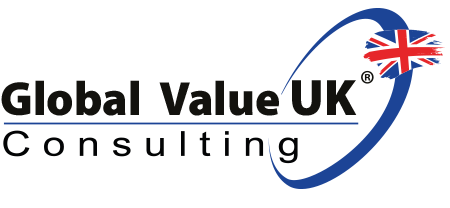Do we need working capital, how can you help us get it?
The most common answer is through a more efficient relationship with the bank. Banks lend money based on the ability to pay. When your financial records, including a cash flow or cash flow forecast, show that you are in control of your business (and the business is not controlling you), the bank is more inclined to support your credit applications. Therefore, the first step to managing cash flow and getting more cash is to improve the quality, accuracy and timeliness of your financial statements.
Do you know how much money to ask for? Is your credit line at the right level? Have you reviewed your cash flow forecast to ensure you’ll have access to it when you need cash? Global Value Consulting offers cash flow projection services that can help you evaluate your needs so you can apply for a line that will truly benefit you when needed. The time to negotiate the line of credit is before needing the cash. If you wait until you run out of cash and can’t pay your operating expenses or purchase assets or enough inventory for your big selling season, you may be limiting your sales for the year and future years.
Business owners are often unclear about what to finance. Our cash flow projection services can help you figure this out. If you use operating cash to pay for capital equipment, then you don’t have cash for operations. If you then use your line of credit to support operations, you may be paying more for that cash than if you had financed the acquisition of capital equipment.
Global Value Consulting offers financial consulting for small businesses. If your bank is not interested or willing to meet your needs, Global Value Consulting can introduce you to other bankers or alternative sources of financing.
Occasionally, the situation requires non-bank financing. An example could be an advance payment against a large government contract or a large purchase order.
We help you get cash directly from your own business. When sales have increased but cash has not, Global Value Consulting will do a detailed financial analysis to see if there is anything you can do internally to improve your cash flow. Have your accounts receivable grown disproportionately to your sales? If so, you are losing money.
Is your inventory turning appropriately in proportion to others in your industry? If not, you are losing money. Are you maximizing your accounts payable terms? If not, you are giving away the money.
Are your supplier’s purchasing terms reasonable? Can they be negotiated? Do you use volume discounts? These are questions that Global Value Consulting will evaluate and help you answer.
Another area to review is costs relative to others in your industry. We can help you compare your performance with others in the country and in your region. Are your staff costs higher than the industry average? Is your gross margin in line with others? Knowing where you stand compared to others gives you guidelines and helps focus your attention to improve your own cash situation.
While these are some ideas on how we help you obtain working capital, there is a more important point to consider. We want you to understand the importance of cash in your business. We want you to “get it.” Cash is the ball. If you take your eyes off the ball, the ball will disappear.
Most business owners know that positive cash flow management is what keeps their business alive. Running out of cash is one of the most devastating events any business can experience. The first step in preventing this unfortunate event is to develop a cash flow statement for the next twelve months. Developing a cash flow statement requires a systematic approach to projecting the sources and uses of cash in future months.
To prepare a cash flow statement, we start at the beginning of the cash flow cycle with a monthly sales forecast for each of the next twelve months. This forecast can be at the company level, but the analysis is generally easier if the forecast is at the product line level.
The next step in the cash flow cycle is to translate those sales into materialized collections. Using the company’s historical experience (at the product line level, if collections experience differs between product lines, otherwise at the company level), we determine how much of each month’s sales are collected within 30 days, how much within 45 days, etc. Using these historical estimates, we can determine the amount of cash we expect to receive each month.

With the projected collections, we can begin to project cash disbursements. We will begin by determining the costs of the sales we project. For each product, we have raw materials or finished product import costs, labor or personnel, and overhead expenses such as occupancy costs, utilities, and insurance.
After repeating this process for each product line, we move on to the next step in the cash flow cycle, which is translating these costs into the timeframes in which we have to pay for these items. Based on the supplier’s terms, we can project how much of the materials cost must be paid within 30 days, how much within 45 days, etc. We follow the same process for labor or personnel costs (the payroll cycle can be weekly, biweekly, bimonthly or monthly) and for overhead expenses.
The second part of the cash disbursements section deals with other operating expenses: selling and administrative costs, research and development, and other expenses. After projecting these costs per month and using the suppliers’ credit terms, we can determine how much of each month’s other operating costs we need to pay within 30 days, within 45 days, etc. We also need to estimate monthly, quarterly and annual tax payments.
By projecting our cash flow projection at this level, we can see where we will have excesses or deficits in our monthly cash flow. If the result is a shortfall, we will have to cover the shortfall through loans, extending payment terms to suppliers, or offering customers a prompt payment discount.
After going through the cash flow cycle with this level of detail, we can see in advance where we will have shortfalls in our cash flow and work with our banker or other financing source to close the gap.
Through this process of developing a cash flow statement, we have developed a great deal of detailed financial information. We can see whether cash flow shortfalls are the result of substandard profitability or because the working capital (accounts receivable, accounts payable) required to fund growth is significant. By looking at the drivers, we can determine what, if anything, we need to change in our business model to achieve positive cash flow.
Contact us to find out how our cash flow management and cash flow forecasting services can help your business.
Services offered



Consulting and Entrepreneurship
ENTREPRENEURSHIP CONSULTING
Off-shore Services and Outsourcing
OFF-SHORE AND OUTSOURCING SERVICES
Continue reading
Visit articles of interest to your company

Global Value S.A. is participating in London Tech Week
Global Value S.A. is participating in London Tech Week from June 10 to 14. A meeting enviroment for entrepreneurs, consultants, venture capital, latest advances in AI, Cyber Security and technological solution providers….

Neuro-science in business: Anticipating action
Discover how neuroscience can help you understand your customers’ behavior and improve business decisions. Join us in this article….

Digital Transformation: The last mile
Digital Transformation involves the organization as a whole and requires strategy, processes and people, not just technology…

Digital Transformation and Organizational Transformation
A concept that has been very “fashionable” these days has been that of Digital Transformation, which due to being used so much and taken out of context, has begun to lose its meaning and…

Stagflation: a toxic cocktail
Is your company prepared to face this new scenario with respect to its financial structure, cash flows, organizational structure or access to credit?…

Do we need working capital, how can you help us get it?
The most common answer is through a more efficient relationship with the bank. Banks lend money based on the ability to pay…



